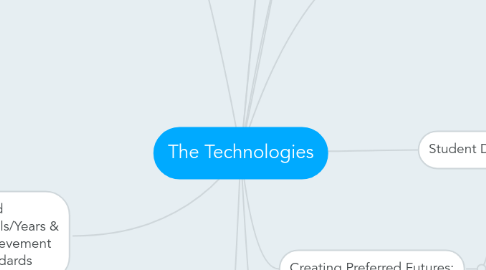
1. Aims
1.1. To develop the knowledge, understanding and skills that ensue that students can both individually and collaboratively do the following:
1.1.1. Investigate, design, plan, manage, create and evaluate solutions.
1.1.2. Are creative, innovative and enterprising hen using a variety of technologies whilst understanding technologies development over time.
1.1.3. Make informed and ethical decisions about the role, impact and use of technologies in the economy, environment and society for a sustainable future.
1.1.4. Engage confidently with technologies and responsibly select and manipulate technologies when designing and creating solutions.
1.1.5. Critique, analyse and evaluate problems, needs and/or opportunities to identify and produce solutions.
2. Cross-curriculum Priorities
2.1. Aboriginal & Torres Strait Islander histories & cultures: students identify and explore the knowledge and understanding of technologies utilised by these groups in past, present and future.
2.2. Asia & Australia's engagement with Asia: students explore the traditional, contemporary and emerging technological achievement in Asian countries.
2.3. Sustainability: students are provided with the opportunity to be active citizens and create sustainable and preferred futures.
3. Band Levels/Years & Achievement Standards
3.1. Digital
3.1.1. F-2: identify/use common digital systems to represent patterns, design solution using a sequence and create/organise ideas.
3.1.2. 3-4: describe different purposes of digital systems, explain different representations of data, design solutions, explain how purposes are met, collect/manipulate data and describe information systems.
3.1.3. 5-6: explain digital system components/use of whole numbers in data types, design solutions and explain information systems/solutions purpose and sustainability.
3.1.4. 1: identify features of digital systems, represent data and follow strategies to stay safe online.
3.1.5. 2: use systems for specific purposes, identify patterns in data and select/present and use data using various digital tools.
3.1.6. 3: explore/recognise differences in purposes of digital systems, present data in various ways, develop ideas with algorithms/branching and create/communicate ideas.
3.1.7. 4: identify different purpose for digital systems/devices, recognise storage/transmission techniques, use visual programming and create/communicate ideas using agreed upon protocols.
3.1.8. 5: identify components of digital systems, represent data using code, create data solutions for user interface and create online collaborative projects.
3.1.9. 6: outline interactions between components/functions of digital systems, make connections between whole numbers in data, use software/visual programming and create online collaborative projects.
3.2. Design
3.2.1. F-2: describe purpose of familiar products, identify features/use of technologies, create/evaluate ideas and demonstrate safe use of equipment.
3.2.2. 3-4: explain how products meet needs, describe contributions of people in design, evaluate/develop/design ideas and identify appropriate technologies and techniques.
3.2.3. 5-6: describe how design and technologies contribute to present/future needs, evaluate their ideas/solutions and select/use appropriate technologies safely in their designed solutions.
3.2.4. 1: identify people that produce familiar products and their process, use technology to move objects, identify plants/animals used for production, observe/explore/select materials to use for constructions, develop ideas and use equipment safely.
3.2.5. 2: identify roles of people that design/produce products, use range of forces to move objects, make connections between healthy living/food and fibre and develop idea to make design decisions.
3.2.6. 3: identify roles people in D&T have on the community, observe/recognise ways forces/materials affect objects, identify equipment/processes used in food and fibre and safely use materials/tools and equipment to create design solutions.
3.2.7. 4: identify roles of people in D&T and their effect on community needs/sustainability, recognise how forces/properties affect materials, identify consumer needs and implement safe practices when selecting materials.
3.2.8. 5: identify how to overcome competitors when designing products, distinguish how forces control movement/sound or light, identify how D&T workers aim to increase efficiency/satisfaction of products, implement food/hygiene practice and apply safe practices to a range of materials/components.
3.2.9. 6: identify how to overcome competing considerations including sustainability, connect ways electrical energy/forces control movement, determine past/current and future considerations when designing food/fibre systems, identify principles of food preparation and consider suitable uses of designs.
4. References: *all burgundy font reflects SCSA content
4.1. School Curriculum and Standards Authority, Government of Western Australia, 2014
4.2. Australian Curriculum, Assessment and Reporting Authority, 2016
5. http://dtm4260.edublogs.org/2017/01/10/present-ideas-in-1-2-3-with-prezi/
6. http://dtm4260.edublogs.org/2017/01/10/get-optismistic-with-bit-the-ozobot/
7. Digital Technologies
7.1. Knowledge & Understanding
7.1.1. Digital Systems
7.1.1.1. Components of digital systems e.g., hardware, software and networks.
7.1.2. Representation of Data
7.1.2.1. How data is structured and presented symbolically.
7.2. Processes & Production Skills
7.2.1. Collecting, managing and analysing data. Creating digital solutions by:
7.2.1.1. Investigating/Defining
7.2.1.2. Generating/Designing
7.2.1.3. Producing/Implementing
7.2.1.4. Evaluating
7.2.1.5. Collaborating/Managing
8. Design & Technology
8.1. Knowledge & Understanding
8.1.1. Technologies & Society
8.1.1.1. The use, development and impact of technology in peoples lives.
8.1.2. Technologies Contexts
8.1.2.1. Technology and design across a range of contexts.
8.2. Processes & Production Skills
8.2.1. Creating designed solutions by:
8.2.1.1. Investigation/Defining
8.2.1.2. Generating/Designing
8.2.1.3. Producing/Implementing
8.2.1.4. Evaluating
8.2.1.5. Collaborating/Managing
